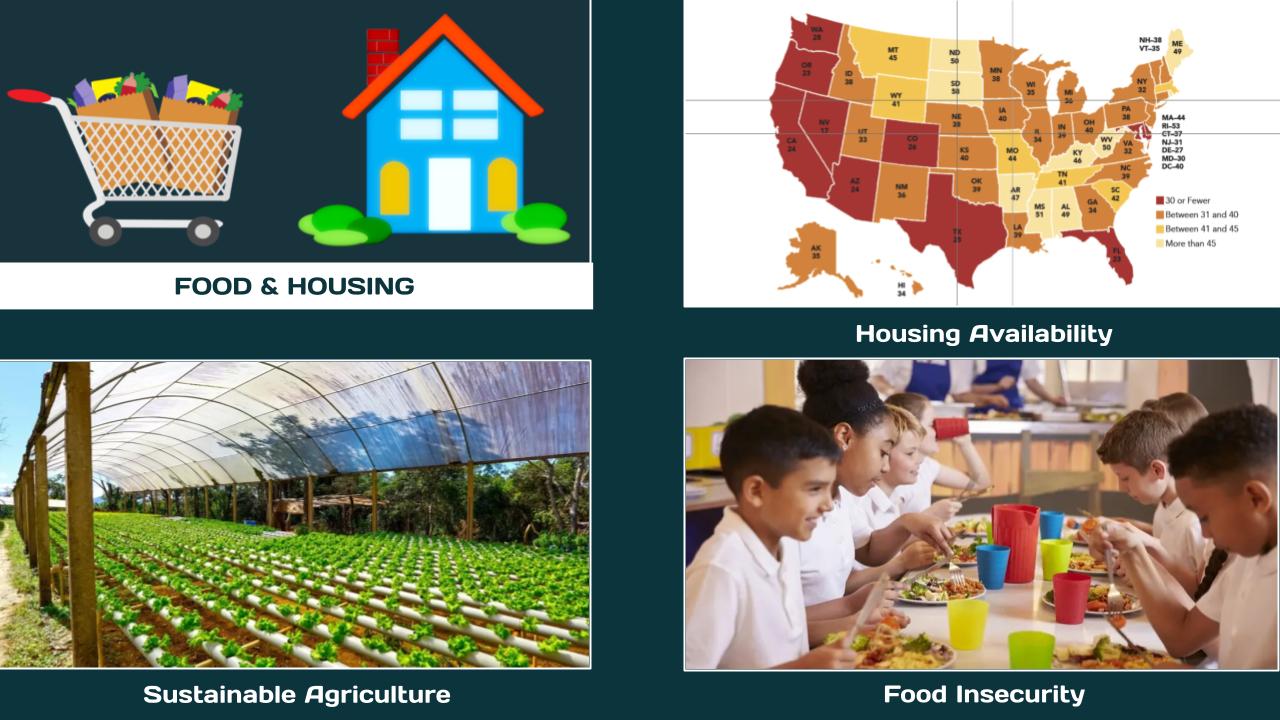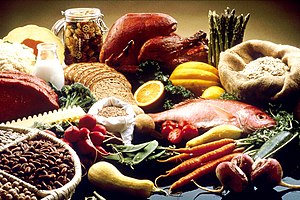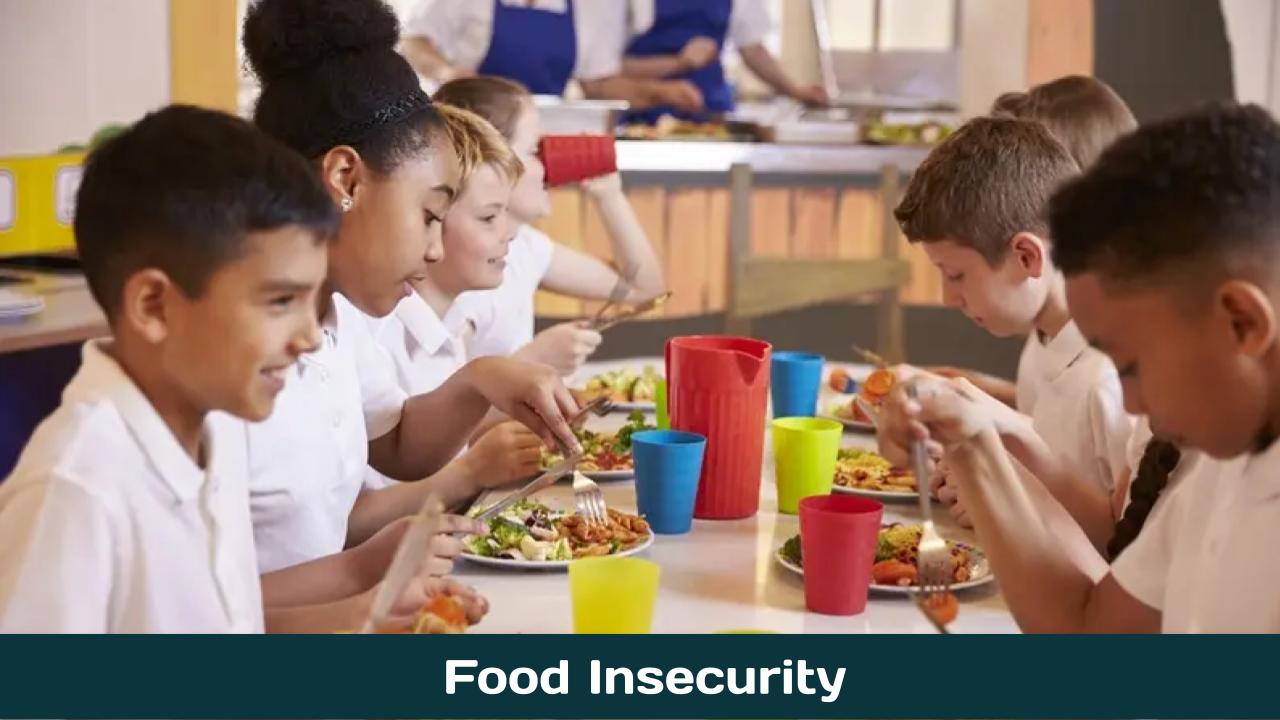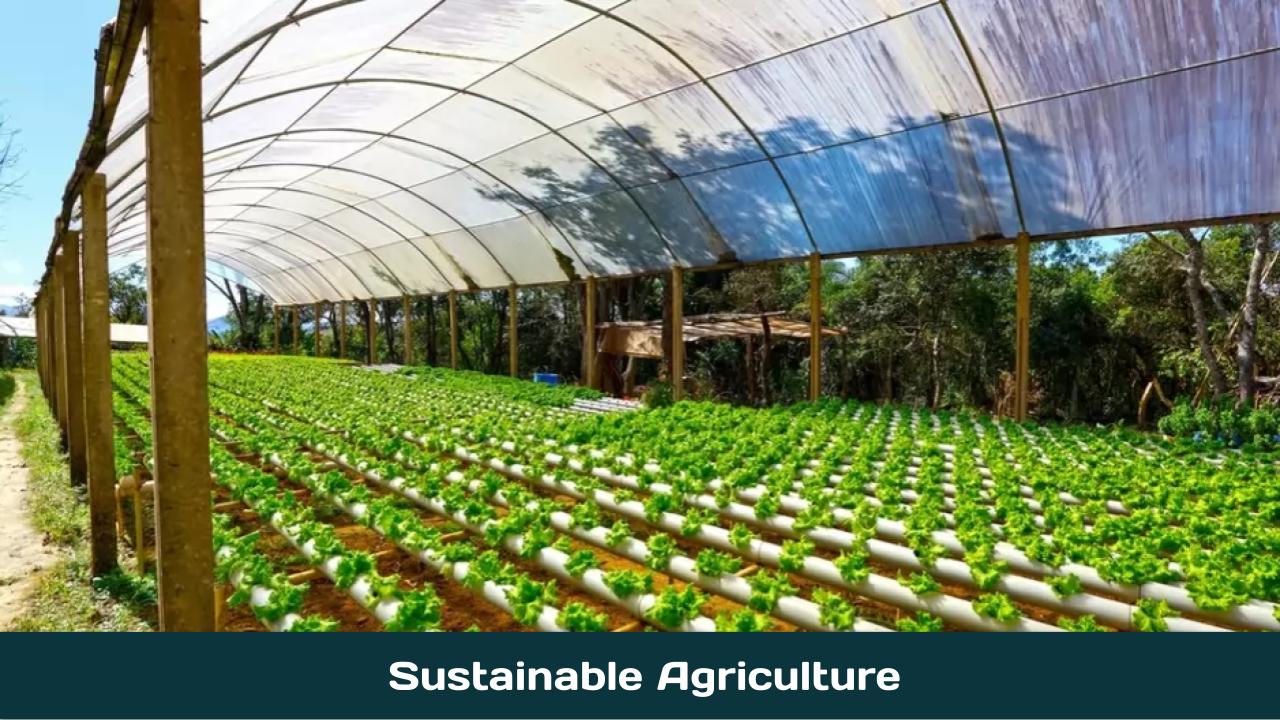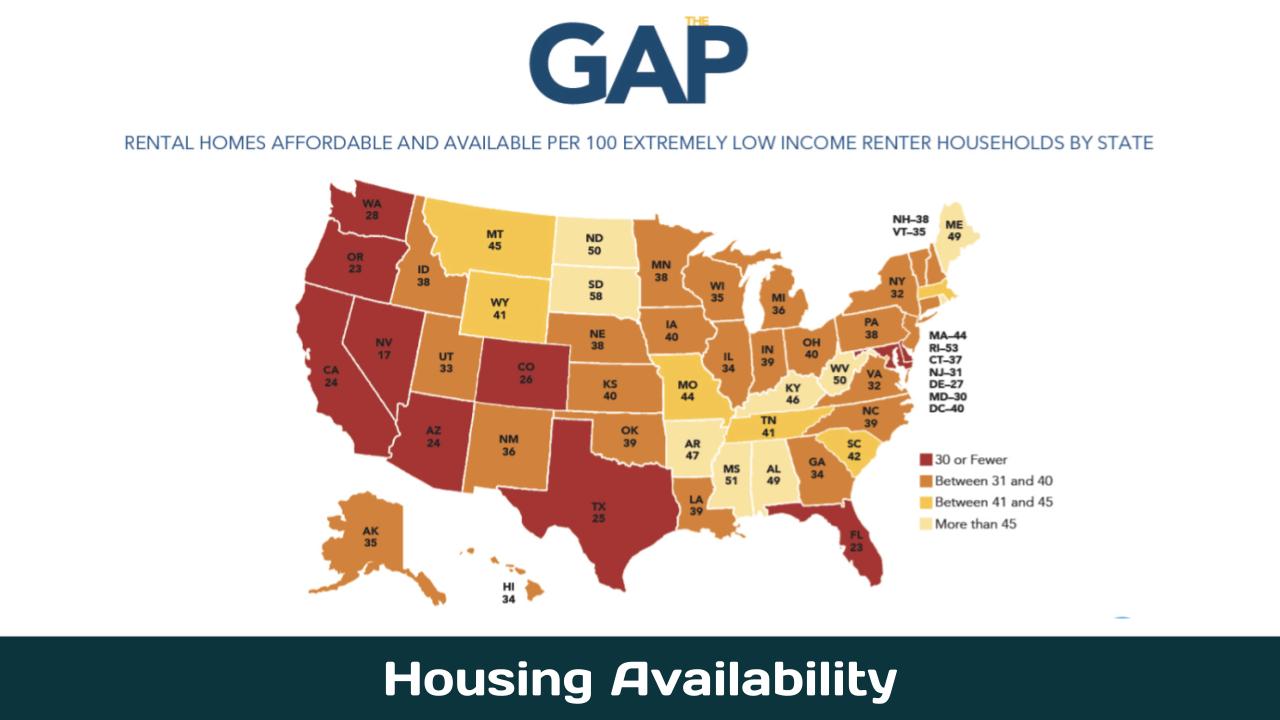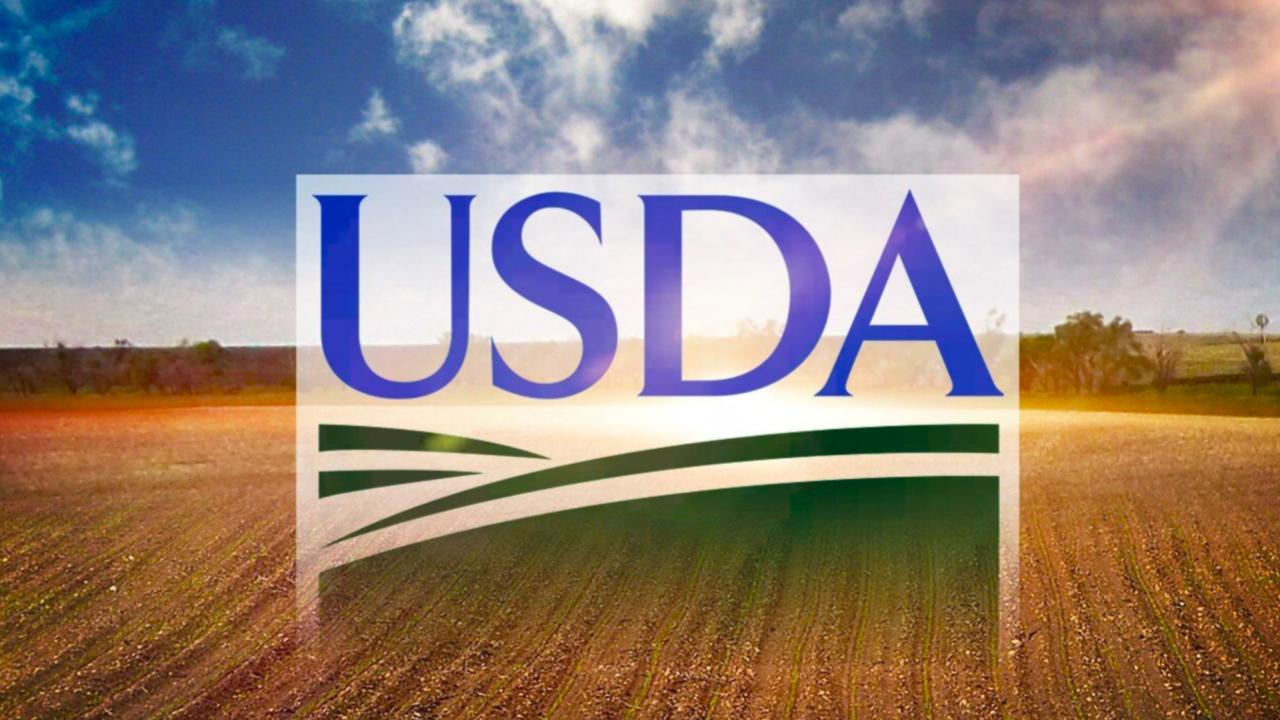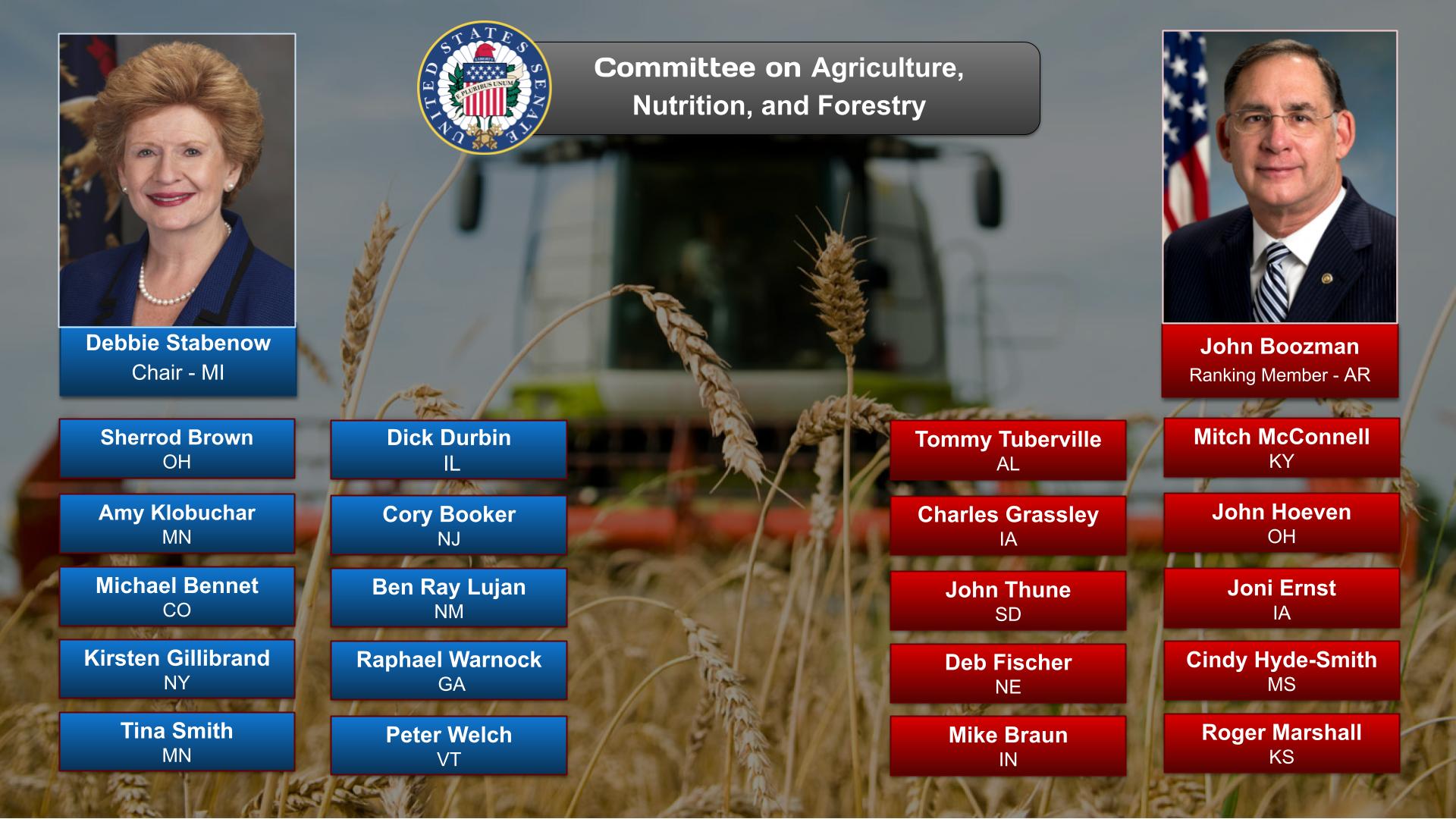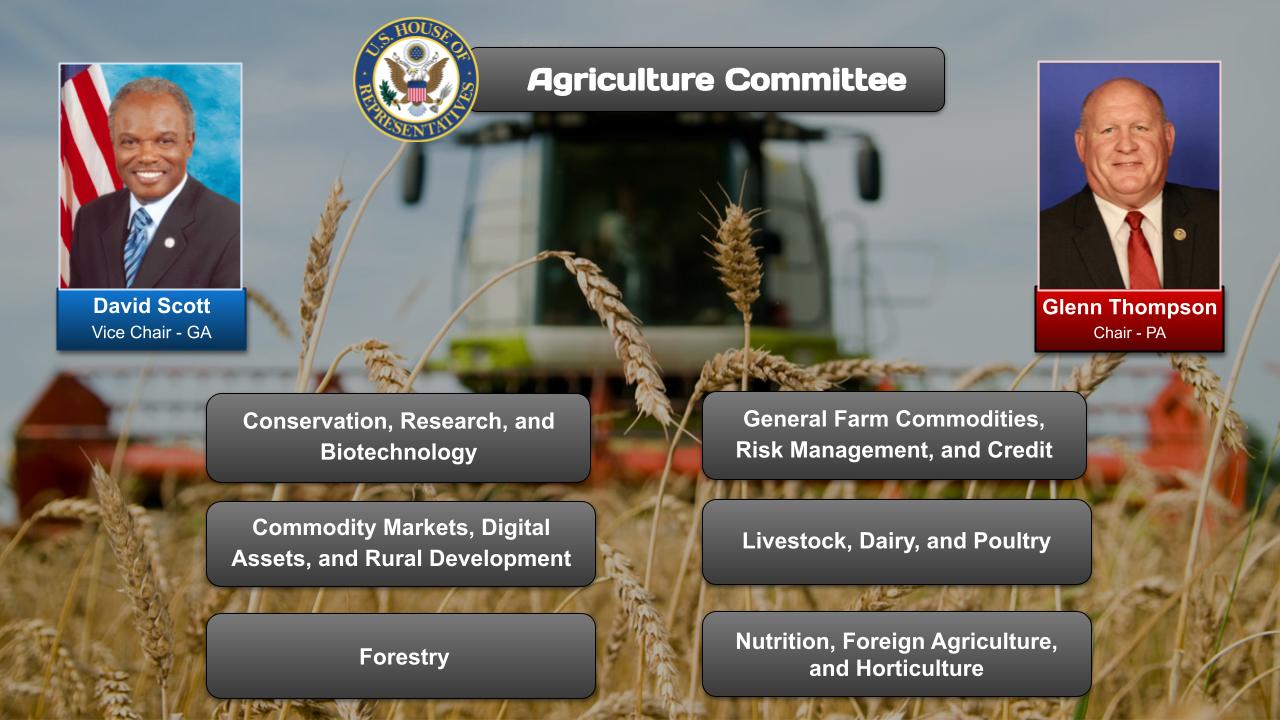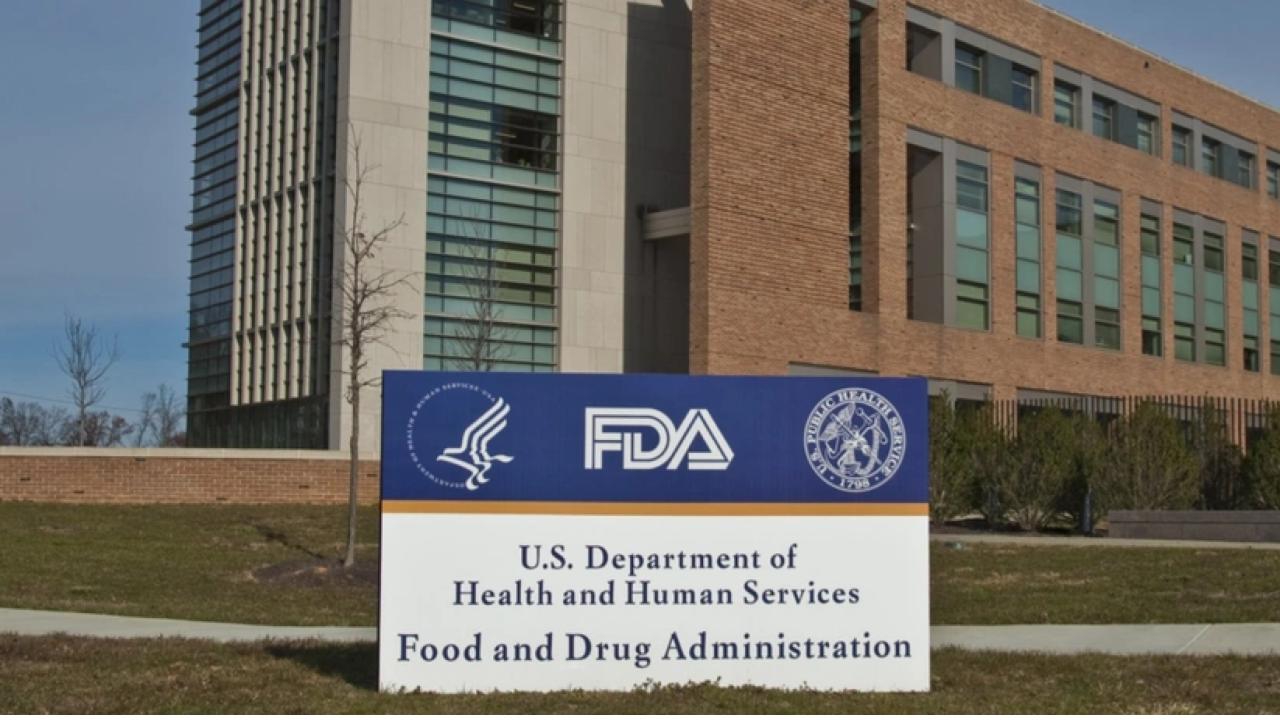Summary
There are many issues related to Food & Housing that Congress is looking to address with legislation.
We have identified three issues for particular focus: Food Insecurity, Housing Availability, and Sustainable. This post summarizes the key challenges and solutions around Food & Housing and the ways Congress and the government are addressing them.. Go to the posts on each issue to learn more about each issue and how Congress and the Government are addressing the challenges.
In the Discussion section of this post, you can ask our curators questions, make suggestions, and discuss other issues related to Food & Housing not being addressed in the three focused issues.
Vox – 16/08/2021 (09:41)
Over the past year, housing prices in the US rose precipitously. Low interest rates and millennials’ entry into the market spiked demand across the nation, leading housing prices in some cities to increase by more than 20 percent in one year, and crushing the dreams of many would-be homeowners.
OnAir Post: Food & Housing
News
PBS NewsHour – February 8, 2024
Rental prices are unaffordable for a record number of Americans with half of all renters paying more than 30 percent of their income on rent and utilities, according to Harvard’s Joint Center for Housing Studies. Stephanie Sy reached out to renters across the country to hear how these soaring prices are impacting their lives and discussed their issues with Whitney Airgood-Obrycki.
The Biden administration announced Thursday that it will take steps to bolster federal programs that produce affordable housing, boost the supply of manufactured homes and promote fairer rental markets.
To bolster affordable housing federal programs, the Department of Housing and Urban Development (HUD) and the Department of Treasury will indefinitely extend programs that provide an ongoing source of capital so state and local housing finance agencies can continue to offer Federal Housing Administration-insured multifamily loans.
To boost the supply and affordability of manufactured homes, HUD announced $225 million in funding for grants that can be used to replace dilapidated homes; assist homeowners with repairs, upgrades and accessibility modifications; and improve the infrastructure of stormwater systems or other utilities.
About
Overview
Food Issues:
- Hunger and Food Insecurity: Millions of Americans experience food insecurity, meaning they lack consistent access to enough nutritious food for an active, healthy life.
- Food System Inequity: The food system favors large corporations and wealthy individuals, leading to disparities in access to healthy food and economic opportunities for farmers.
- Climate Change Impacts: Extreme weather events, such as droughts and floods, are disrupting food production and supply chains.
- Processing and Additives: The American diet is heavily processed, containing high levels of unhealthy additives, such as sugar, salt, and artificial sweeteners.
- Food Waste: Significant amounts of food are wasted at all stages of the supply chain, contributing to environmental concerns.
Housing Issues:
- Affordability: Housing costs are rising rapidly in many areas, making it increasingly difficult for people to afford decent housing.
- Homelessness: Millions of Americans experience homelessness, due to factors such as poverty, mental illness, and addiction.
- Lack of Affordable Housing: There is a shortage of affordable housing for low-income families and individuals, especially in high-cost areas.
- Housing Discrimination: Discrimination based on race, gender, or other protected characteristics remains a significant barrier to housing access.
- Climate Resilience: Extreme weather events and rising sea levels pose significant threats to housing stability, particularly in coastal areas.
- Overcrowding: Overcrowded housing conditions can have negative health and social consequences, especially for vulnerable populations.
Source: Google Search + Gemini + onAir curation
Party positions
Republican Party platform: In 2020, the Republican Party decided not to write a platform for that presidential election cycle, instead simply expressing its support for Donald Trump’s agenda.
- Go here to see a PDF on 2016 Republican Platform.
- Go to this Wikipedia entry to read “Political positions of Donald Trump”.
Democratic Party platform:
- Go here to read the Democratic Party’s plaform on the DNC’s website.
- Go to this Wikipedia entry to read the”Political positions of the Democratic Party”
Democratic Party:
- Food security:
- Expand access to SNAP (Supplemental Nutrition Assistance Program)
- Increase funding for school meal programs
- Promote local and sustainable food systems
- Reduce food waste
- Housing:
- Increase affordable housing stock through subsidies, tax credits, and fair housing policies
- Provide rental assistance and eviction prevention services
- Address homelessness through supportive housing programs and mental health services
Republican Party:
- Food security:
- Reduce government assistance programs, such as SNAP
- Promote personal responsibility and self-reliance
- Deregulate the food industry
- Housing:
- Limit government intervention in the housing market
- Encourage homeownership and reduce regulations
- Provide tax incentives for private sector housing development
Other Key Issues:
Inflation and affordability:
- Both parties express concern over rising inflation and its impact on food and housing costs.
- Democrats generally support policies to provide financial assistance to households, while Republicans prefer tax cuts and deregulation.
Climate change and environmental sustainability:
- Democrats prioritize reducing greenhouse gas emissions and promoting renewable energy, which can impact food and housing infrastructure.
- Republicans generally oppose climate change policies, arguing that they harm businesses and consumers.
Labor issues:
- Democrats advocate for increased wages and benefits for food and housing workers.
- Republicans typically support deregulation of labor markets and limiting union power.
Community development:
- Both parties support programs that invest in low-income communities and promote economic opportunity. However, they differ on the role of government in these programs.
Source: Google Search + Gemini + onAir curation
Websites
Food Assistance
- Supplemental Nutrition Assistance Program (SNAP): https://www.fns.usda.gov/snap
- Special Supplemental Nutrition Program for Women, Infants, and Children (WIC): https://www.fns.usda.gov/wic
- National School Lunch Program: https://www.fns.usda.gov/nslp
- School Breakfast Program: https://www.fns.usda.gov/sbp
- Summer Food Service Program: https://www.fns.usda.gov/sfsp
- Commodity Supplemental Food Program (CSFP): https://www.fns.usda.gov/csfp
- National Hunger Hotline: 1-800-424-8802
Housing Assistance
- Section 8 Housing Choice Voucher Program: https://www.hud.gov/programs/section-8-housing-choice-voucher-program
- Public Housing Program: https://www.hud.gov/programs/public-housing
- Rental Assistance Demonstration (RAD): https://www.hud.gov/programs/rental-assistance-demonstration-rad
- Low-Income Housing Tax Credit (LIHTC): https://www.hud.gov/programs/lihtc
- HOME Investment Partnerships Program (HOME): https://www.hud.gov/programs/home
- Community Development Block Grant (CDBG): https://www.hud.gov/programs/community-development-block-grant-cdbg
- Emergency Rental Assistance Program: https://www.hud.gov/topics/rental-assistance/emergency-rental-assistance
Source: Google Search + Gemini + onAir curation
DEPARTMENT & AGENCIES
Departments
Source: Google Search + Gemini + onAir curation
Food
- United States Department of Agriculture (USDA)
- Food and Nutrition Service (FNS): Provides nutrition assistance programs, including the Supplemental Nutrition Assistance Program (SNAP), formerly known as food stamps.
- Food Safety and Inspection Service (FSIS): Inspects meat, poultry, and egg products to ensure food safety.
- Agricultural Research Service (ARS): Conducts research on food production, nutrition, and food safety.
- Department of Health and Human Services (HHS)
- Food and Drug Administration (FDA): Regulates food, drugs, and cosmetics to ensure safety and effectiveness.
- Centers for Disease Control and Prevention (CDC): Monitors foodborne illnesses and provides public health guidance on food safety.
Housing
- Department of Housing and Urban Development (HUD)
- Federal Housing Administration (FHA): Provides mortgage insurance to low- and moderate-income homebuyers.
- Office of Housing: Oversees HUD’s affordable housing programs, including public housing and rental assistance vouchers.
- Office of Fair Housing and Equal Opportunity (FHEO): Enforces fair housing laws and investigates discrimination in housing.
- Department of Veterans Affairs (VA)
- Veterans Benefits Administration: Provides housing assistance to eligible veterans and their families.
- Department of Agriculture (USDA)
- Rural Housing Service (RHS): Provides loans and grants for affordable housing in rural areas.
- Department of Energy (DOE)
- Weatherization Assistance Program: Provides funding to weatherize low-income homes to improve energy efficiency and reduce utility bills.
Agencies
Source: Google Search + Gemini + onAir curation
Food
- US Department of Agriculture (USDA)
- Food and Nutrition Service (FNS): SNAP, WIC, school meals
- Farm Service Agency (FSA): Farm subsidies, disaster assistance
- Food Safety and Inspection Service (FSIS): Food safety inspection
- Department of Health and Human Services (HHS)
- Food and Drug Administration (FDA): Food safety regulation
- Centers for Disease Control and Prevention (CDC): Nutrition and health monitoring
- Environmental Protection Agency (EPA)
- Office of Pesticide Programs: Pesticide regulation
Housing
- Department of Housing and Urban Development (HUD)
- Office of Public and Indian Housing: Public housing programs
- Office of Fair Housing and Equal Opportunity: Fair housing enforcement
- Office of Community Planning and Development: Housing grants and loans
- Department of Agriculture (USDA)
- Rural Housing Service (RHS): Housing assistance for rural areas
- Department of Veterans Affairs (VA)
- Veterans Health Administration: Housing assistance for veterans
- Federal Housing Administration (FHA)
- Mortgage insurance for homebuyers
Committees & Caucuses
Committees
Source: Google Search + Gemini + onAir curation
House of Representatives
- Committee on Agriculture – Jurisdiction over farm and food programs, including food safety, nutrition, and agricultural research.
- Committee on Banking, Housing, and Urban Affairs – Jurisdiction over federal housing finance agencies, affordable housing, and community development.
Senate
- Committee on Agriculture, Nutrition, and Forestry – Jurisdiction over farm and food programs, including food safety, nutrition, and agricultural research.
- Committee on Banking, Housing, and Urban Affairs – Jurisdiction over federal housing finance agencies, affordable housing, and community development.
Joint Committees
- Joint Committee on Agriculture – Conducts joint hearings and makes recommendations on agricultural policies involving nutrition, environmental protection, and trade.
- Joint Committee on Housing – Conducts joint hearings and makes recommendations on national housing policy, including affordable housing, fair lending, and housing finance.
Senate
House
Caucuses
Source: Google Search + Gemini + onAir curation
Key Congressional Caucuses for US Food Issues
- Congressional Hunger Center: Focuses on addressing hunger and food insecurity in the United States.
- Congressional Black Caucus Hunger Caucus: Advocates for policies to combat hunger and food insecurity among people of color.
- Bipartisan Policy Center’s Food Security Task Force: Brings together policymakers to develop solutions to food security challenges.
- House Agriculture Subcommittee on Nutrition, Oversight, and Department Operations: Oversees federal food assistance programs, including the Supplemental Nutrition Assistance Program (SNAP).
Key Congressional Caucuses for US Housing Issues
- Congressional Housing and Community Development Caucus: Advocates for affordable housing, community development, and neighborhood revitalization.
- Congressional Black Caucus Housing Task Force: Focuses on addressing housing disparities among people of color.
- Congressional Hispanic Caucus Housing and Community Development Task Force: Promotes affordable housing and community development opportunities for Hispanic communities.
- House Financial Services Subcommittee on Housing, Urban Development, and Community Development: Oversees federal housing programs, including the Federal Housing Administration (FHA).
- Senate Banking, Housing, and Urban Affairs Committee: Oversees federal housing policy and programs.
More Information
Nonpartisan Organizations
Source: Google Search + Gemini + onAir curation
Food
- Center on Budget and Policy Priorities (CBPP): A nonpartisan research and policy institute focused on budget, poverty, and economic inequality. CBPP’s food assistance work includes research and analysis on SNAP (Supplemental Nutrition Assistance Program) and other programs.
- Food Research & Action Center (FRAC): A national nonprofit organization working to eradicate hunger and poverty through research, advocacy, and education. FRAC focuses on food assistance programs, such as SNAP, WIC (Special Supplemental Nutrition Program for Women, Infants, and Children), and the National School Lunch Program.
- National Hunger Task Force (NHTF): A national nonprofit organization bringing together over 50 anti-hunger organizations to advocate for policies and programs to end hunger. NHTF focuses on food assistance, school meals, and the root causes of hunger.
Housing
- National Low Income Housing Coalition (NLIHC): A nonpartisan national advocacy organization dedicated to ensuring affordable and decent homes for everyone. NLIHC’s work includes research, advocacy, and education on housing assistance programs, such as the Low Income Housing Tax Credit, Fair Housing Act, and Public Housing.
- Center for American Progress (CAP): A nonpartisan think tank that promotes economic and social progress. CAP’s housing work includes research, analysis, and advocacy on affordable housing, rental assistance, and homelessness prevention.
- Urban Institute: A nonpartisan research organization that analyzes social and economic issues. The Urban Institute’s housing work includes research on housing affordability, mortgage markets, and housing policy.
Partisan Organizations
Source: Google Search + Gemini + onAir curation
Democratic-Leaning:
- Center on Budget and Policy Priorities: Focuses on addressing hunger and nutrition insecurity, particularly among low-income Americans.
- Food Research & Action Center (FRAC): Advocates for federal nutrition programs and other policies that combat hunger.
- National Low Income Housing Coalition: Includes food security among its priorities, recognizing the connection between housing and food access.
Republican-Leaning:
- American Farm Bureau Federation: Represents farmers and ranchers, and supports policies that promote food production and distribution.
- Heritage Foundation: A conservative think tank that generally opposes government intervention in food markets.
- Hoover Institution: A conservative research institution that emphasizes free market principles in addressing food issues.
Organizations Addressing Housing Issues:
Democratic-Leaning:
- National Association of Realtors: The largest trade association for real estate professionals, advocates for policies that support affordable housing.
- National Low Income Housing Coalition (NLIHC): Focuses on increasing the availability of affordable housing for low-income households.
- Center on Budget and Policy Priorities: Analyzes the impact of housing policies on low-income Americans.
Republican-Leaning:
- National Association of Home Builders (NAHB): Advocates for policies that support the home building industry and homeownership.
- American Legislative Exchange Council (ALEC): A conservative organization that promotes limited government and property rights, including in the area of housing.
- Manhattan Institute: A conservative think tank that advocates for market-based solutions to housing problems.
Food (Wiki)
Contents
Food is any substance consumed by an organism for nutritional support. Food is usually of plant, animal, or fungal origin and contains essential nutrients such as carbohydrates, fats, proteins, vitamins, or minerals. The substance is ingested by an organism and assimilated by the organism’s cells to provide energy, maintain life, or stimulate growth. Different species of animals have different feeding behaviours that satisfy the needs of their metabolisms and have evolved to fill a specific ecological niche within specific geographical contexts.
Omnivorous humans are highly adaptable and have adapted to obtain food in many different ecosystems. Humans generally use cooking to prepare food for consumption. The majority of the food energy required is supplied by the industrial food industry, which produces food through intensive agriculture and distributes it through complex food processing and food distribution systems. This system of conventional agriculture relies heavily on fossil fuels, which means that the food and agricultural systems are one of the major contributors to climate change, accounting for as much as 37% of total greenhouse gas emissions.[1]
The food system has significant impacts on a wide range of other social and political issues, including sustainability, biological diversity, economics, population growth, water supply, and food security. Food safety and security are monitored by international agencies like the International Association for Food Protection, the World Resources Institute, the World Food Programme, the Food and Agriculture Organization, and the International Food Information Council.
Definition and classification

Food is any substance consumed to provide nutritional support and energy to an organism.[2][3] It can be raw, processed, or formulated and is consumed orally by animals for growth, health, or pleasure. Food is mainly composed of water, lipids, proteins, and carbohydrates. Minerals (e.g., salts) and organic substances (e.g., vitamins) can also be found in food.[4] Plants, algae, and some microorganisms use photosynthesis to make some of their own nutrients.[5] Water is found in many foods and has been defined as a food by itself.[6] Water and fiber have low energy densities, or calories, while fat is the most energy-dense component.[3] Some inorganic (non-food) elements are also essential for plant and animal functioning.[7]
Human food can be classified in various ways, either by related content or by how it is processed.[8] The number and composition of food groups can vary. Most systems include four basic groups that describe their origin and relative nutritional function: Vegetables and Fruit, Cereals and Bread, Dairy, and Meat.[9] Studies that look into diet quality group food into whole grains/cereals, refined grains/cereals, vegetables, fruits, nuts, legumes, eggs, dairy products, fish, red meat, processed meat, and sugar-sweetened beverages.[10][11][12] The Food and Agriculture Organization and World Health Organization use a system with nineteen food classifications: cereals, roots, pulses and nuts, milk, eggs, fish and shellfish, meat, insects, vegetables, fruits, fats and oils, sweets and sugars, spices and condiments, beverages, foods for nutritional uses, food additives, composite dishes and savoury snacks.[13]
Food sources

In a given ecosystem, food forms a web of interlocking chains with primary producers at the bottom and apex predators at the top.[14] Other aspects of the web include detrovores (that eat detritis) and decomposers (that break down dead organisms).[14] Primary producers include algae, plants, bacteria and protists that acquire their energy from sunlight.[15] Primary consumers are the herbivores that consume the plants, and secondary consumers are the carnivores that consume those herbivores. Some organisms, including most mammals and birds, diet consists of both animals and plants, and they are considered omnivores.[16] The chain ends with the apex predators, the animals that have no known predators in its ecosystem.[17] Humans are considered apex predators.[18]
Humans are omnivores, finding sustenance in vegetables, fruits, cooked meat, milk, eggs, mushrooms and seaweed.[16] Cereal grain is a staple food that provides more food energy worldwide than any other type of crop.[19] Corn (maize), wheat, and rice account for 87% of all grain production worldwide.[20][21][22] Just over half of the world’s crops are used to feed humans (55 percent), with 36 percent grown as animal feed and 9 percent for biofuels.[23] Fungi and bacteria are also used in the preparation of fermented foods like bread, wine, cheese and yogurt.[24]
Bacteria
Without bacteria, life would scarcely exist because bacteria convert atmospheric nitrogen into nutritious ammonia. Ammonia is the precursor to proteins, nucleic acids, and most vitamins. Since the advent of industrial process for nitrogen fixation, the Haber-Bosch Process, the majority of ammonia in the world is human-made.[25]
Plants
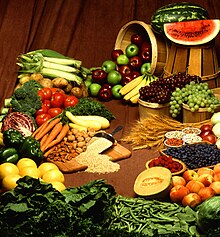
Photosynthesis is the source of most energy and food for nearly all life on earth.[26] Photosynthesis is one main source of biomass, the food for plants, algae and certain bacteria and, indirectly, organisms higher in the food chain.[27][28] Energy from the sun is absorbed and used to transform water and carbon dioxide in the air or soil into oxygen and glucose. The oxygen is then released, and the glucose stored as an energy reserve.[29]
Plants also absorb important nutrients and minerals from the air, natural waters, and soil.[30] Carbon, oxygen and hydrogen are absorbed from the air or water and are the basic nutrients needed for plant survival.[31] The three main nutrients absorbed from the soil for plant growth are nitrogen, phosphorus and potassium, with other important nutrients including calcium, sulfur, magnesium, iron boron, chlorine, manganese, zinc, copper molybdenum and nickel.[31]
Plants as a food source are divided into seeds, fruits, vegetables, legumes, grains and nuts.[32] Where plants fall within these categories can vary, with botanically described fruits such as the tomato, squash, pepper and eggplant or seeds like peas commonly considered vegetables.[33] Food is a fruit if the part eaten is derived from the reproductive tissue, so seeds, nuts and grains are technically fruit.[34][35] From a culinary perspective, fruits are generally considered the remains of botanically described fruits after grains, nuts, seeds and fruits used as vegetables are removed.[36] Grains can be defined as seeds that humans eat or harvest, with cereal grains (oats, wheat, rice, corn, barley, rye, sorghum and millet) belonging to the Poaceae (grass) family[37] and pulses coming from the Fabaceae (legume) family.[38] Whole grains are foods that contain all the elements of the original seed (bran, germ, and endosperm).[39] Nuts are dry fruits, distinguishable by their woody shell.[36]
Fleshy fruits (distinguishable from dry fruits like grain, seeds and nuts) can be further classified as stone fruits (cherries and peaches), pome fruits (apples, pears), berries (blackberry, strawberry), citrus (oranges, lemon), melons (watermelon, cantaloupe), Mediterranean fruits (grapes, fig), tropical fruits (banana, pineapple).[36] Vegetables refer to any other part of the plant that can be eaten, including roots, stems, leaves, flowers, bark or the entire plant itself.[40] These include root vegetables (potatoes and carrots), bulbs (onion family), flowers (cauliflower and broccoli), leaf vegetables (spinach and lettuce) and stem vegetables (celery and asparagus).[41][40]
The carbohydrate, protein and lipid content of plants is highly variable. Carbohydrates are mainly in the form of starch, fructose, glucose and other sugars.[32] Most vitamins are found from plant sources, with exceptions of vitamin D and vitamin B12. Minerals can also be plentiful or not. Fruit can consist of up to 90% water, contain high levels of simple sugars that contribute to their sweet taste, and have a high vitamin C content.[32][36] Compared to fleshy fruit (excepting Bananas) vegetables are high in starch,[42] potassium, dietary fiber, folate and vitamins and low in fat and calories.[43] Grains are more starch based[32] and nuts have a high protein, fibre, vitamin E and B content.[36] Seeds are a good source of food for animals because they are abundant and contain fibre and healthful fats, such as omega-3 fats.[44][45] Complicated chemical interactions can enhance or depress bioavailability of certain nutrients. Phytates can prevent the release of some sugars and vitamins.[32]
Animals that only eat plants are called herbivores, with those that mostly just eat fruits known as frugivores,[46] leaves, while shoot eaters are folivores (pandas) and wood eaters termed xylophages (termites).[47] Frugivores include a diverse range of species from annelids to elephants, chimpanzees and many birds.[48][49][50] About 182 fish consume seeds or fruit.[51] Animals (domesticated and wild) use as many types of grasses that have adapted to different locations as their main source of nutrients.[52]
Humans eat thousands of plant species; there may be as many as 75,000 edible species of angiosperms, of which perhaps 7,000 are often eaten.[53] Plants can be processed into breads, pasta, cereals, juices and jams or raw ingredients such as sugar, herbs, spices and oils can be extracted.[32] Oilseeds are pressed to produce rich oils – sunflower, flaxseed, rapeseed (including canola oil) and sesame.[54]
Many plants and animals have coevolved in such a way that the fruit is a good source of nutrition to the animal who then excretes the seeds some distance away, allowing greater dispersal.[55] Even seed predation can be mutually beneficial, as some seeds can survive the digestion process.[56][57] Insects are major eaters of seeds,[44] with ants being the only real seed dispersers.[58] Birds, although being major dispersers,[59] only rarely eat seeds as a source of food and can be identified by their thick beak that is used to crack open the seed coat.[60] Mammals eat a more diverse range of seeds, as they are able to crush harder and larger seeds with their teeth.[61]
Animals

Animals are used as food either directly or indirectly. This includes meat, eggs, shellfish and dairy products like milk and cheese.[62] They are an important source of protein and are considered complete proteins for human consumption as they contain all the essential amino acids that the human body needs.[63] One 4-ounce (110 g) steak, chicken breast or pork chop contains about 30 grams of protein. One large egg has 7 grams of protein. A 4-ounce (110 g) serving of cheese has about 15 grams of protein. And 1 cup of milk has about 8 grams of protein.[63] Other nutrients found in animal products include calories, fat, essential vitamins (including B12) and minerals (including zinc, iron, calcium, magnesium).[63]
Food products produced by animals include milk produced by mammary glands, which in many cultures is drunk or processed into dairy products (cheese, butter, etc.). Eggs laid by birds and other animals are eaten and bees produce honey, a reduced nectar from flowers that is used as a popular sweetener in many cultures. Some cultures consume blood, such as in blood sausage, as a thickener for sauces, or in a cured, salted form for times of food scarcity, and others use blood in stews such as jugged hare.[64]
Taste
Animals, specifically humans, typically have five different types of tastes: sweet, sour, salty, bitter, and umami. The differing tastes are important for distinguishing between foods that are nutritionally beneficial and those which may contain harmful toxins.[65] As animals have evolved, the tastes that provide the most energy are the most pleasant to eat while others are not enjoyable,[66] although humans in particular can acquire a preference for some substances which are initially unenjoyable.[65] Water, while important for survival, has no taste.[67]
Sweetness is almost always caused by a type of simple sugar such as glucose or fructose, or disaccharides such as sucrose, a molecule combining glucose and fructose.[68] Sourness is caused by acids, such as vinegar in alcoholic beverages. Sour foods include citrus, specifically lemons and limes. Sour is evolutionarily significant as it can signal a food that may have gone rancid due to bacteria.[69] Saltiness is the taste of alkali metal ions such as sodium and potassium. It is found in almost every food in low to moderate proportions to enhance flavor. Bitter taste is a sensation considered unpleasant characterised by having a sharp, pungent taste. Unsweetened dark chocolate, caffeine, lemon rind, and some types of fruit are known to be bitter. Umami, commonly described as savory, is a marker of proteins and characteristic of broths and cooked meats.[70] Foods that have a strong umami flavor include cheese, meat and mushrooms.[71]
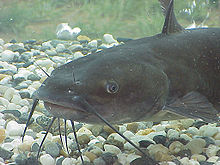
While most animals taste buds are located in their mouth, some insects taste receptors are located on their legs and some fish have taste buds along their entire body.[72][73] Dogs, cats and birds have relatively few taste buds (chickens have about 30),[74] adult humans have between 2000 and 4000,[75] while catfish can have more than a million.[73] Herbivores generally have more than carnivores as they need to tell which plants may be poisonous.[74] Not all mammals share the same tastes: some rodents can taste starch, cats cannot taste sweetness, and several carnivores (including hyenas, dolphins, and sea lions) have lost the ability to sense up to four of the five taste modalities found in humans.[76]
Digestion
Food is broken into nutrient components through digestive process.[77] Proper digestion consists of mechanical processes (chewing, peristalsis) and chemical processes (digestive enzymes and microorganisms).[78][79] The digestive systems of herbivores and carnivores are very different as plant matter is harder to digest. Carnivores mouths are designed for tearing and biting compared to the grinding action found in herbivores.[80] Herbivores however have comparatively longer digestive tracts and larger stomachs to aid in digesting the cellulose in plants.[81][82]
Food safety
According to the World Health Organization (WHO), about 600 million people worldwide get sick and 420,000 die each year from eating contaminated food.[83][84] Diarrhea is the most common illness caused by consuming contaminated food, with about 550 million cases and 230,000 deaths from diarrhea each year. Children under five years of age account for 40% of the burden of foodborne illness, with 125,000 deaths each year.[84][85]
A 2003 World Health Organization (WHO) report concluded that about 30% of reported food poisoning outbreaks in the WHO European Region occur in private homes.[86] According to the WHO and CDC, in the USA alone, annually, there are 76 million cases of foodborne illness leading to 325,000 hospitalizations and 5,000 deaths.[87]
From 2011 to 2016, on average, there were 668,673 cases of foodborne illness and 21 deaths each year.[88][89][90][91] In addition, during this period, 1,007 food poisoning outbreaks with 30,395 cases of food poisoning were reported.[84]
See also
References
- ^ SAPEA (2020). A sustainable food system for the European Union (PDF). Berlin: Science Advice for Policy by European Academies. p. 39. doi:10.26356/sustainablefood. ISBN 978-3-9820301-7-3. Archived from the original (PDF) on 18 April 2020. Retrieved 14 April 2020.
- ^ “Food definition and meaning”. Collins English Dictionary. Archived from the original on 1 May 2021. Retrieved 21 August 2021.
- ^ a b “Low-Energy-Dense Foods and Weight Management: Cutting Calories While Controlling Hunger” (PDF). Centers for Disease Control and Prevention. Archived (PDF) from the original on 18 November 2021. Retrieved 3 December 2021.
- ^ Rahman, M. Shafiur; McCarthy, Owen J. (July 1999). “A classification of food properties”. International Journal of Food Properties. 2 (2): 93–99. doi:10.1080/10942919909524593. ISSN 1094-2912.
- ^ “What is Photosynthesis”. Smithsonian Science Education Center. 12 April 2017. Archived from the original on 3 December 2021. Retrieved 3 December 2021.
- ^ “CPG Sec 555.875 Water in Food Products (Ingredient or Adulterant)”. U.S. Food and Drug Administration. 11 February 2020. Archived from the original on 3 December 2021. Retrieved 3 December 2021.
- ^ Zoroddu, Maria Antonietta; Aaseth, Jan; Crisponi, Guido; Medici, Serenella; Peana, Massimiliano; Nurchi, Valeria Marina (1 June 2019). “The essential metals for humans: a brief overview”. Journal of Inorganic Biochemistry. 195: 120–129. doi:10.1016/j.jinorgbio.2019.03.013. ISSN 0162-0134. PMID 30939379. S2CID 92997696. Archived from the original on 11 April 2022. Retrieved 11 April 2022.
- ^ Sadler, Christina R.; Grassby, Terri; Hart, Kathryn; Raats, Monique; Sokolović, Milka; Timotijevic, Lada (1 June 2021). “Processed food classification: Conceptualisation and challenges”. Trends in Food Science & Technology. 112: 149–162. doi:10.1016/j.tifs.2021.02.059. ISSN 0924-2244. S2CID 233647428.
- ^ Nestle, Marion (2013) [2002]. Food Politics: How the Food Industry Influences Nutrition and Health. University of California Press. pp. 36–37. ISBN 978-0-520-27596-6.
- ^ Schwingshackl, Lukas; Schwedhelm, Carolina; Hoffmann, Georg; Lampousi, Anna-Maria; Knüppel, Sven; Iqbal, Khalid; Bechthold, Angela; Schlesinger, Sabrina; Boeing, Heiner (2017). “Food groups and risk of all-cause mortality: a systematic review and meta-analysis of prospective studies”. The American Journal of Clinical Nutrition. 105 (6): 1462–1473. doi:10.3945/ajcn.117.153148. ISSN 0002-9165. PMID 28446499. S2CID 22494319.
- ^ Schwingshackl, Lukas; Schwedhelm, Carolina; Hoffmann, Georg; Knüppel, Sven; Preterre, Anne Laure; Iqbal, Khalid; Bechthold, Angela; Henauw, Stefaan De; Michels, Nathalie; Devleesschauwer, Brecht; Boeing, Heiner (2018). “Food groups and risk of colorectal cancer”. International Journal of Cancer. 142 (9): 1748–1758. doi:10.1002/ijc.31198. ISSN 1097-0215. PMID 29210053.
- ^ Schwingshackl, Lukas; Hoffmann, Georg; Lampousi, Anna-Maria; Knüppel, Sven; Iqbal, Khalid; Schwedhelm, Carolina; Bechthold, Angela; Schlesinger, Sabrina; Boeing, Heiner (May 2017). “Food groups and risk of type 2 diabetes mellitus: a systematic review and meta-analysis of prospective studies”. European Journal of Epidemiology. 32 (5): 363–375. doi:10.1007/s10654-017-0246-y. ISSN 0393-2990. PMC 5506108. PMID 28397016.
- ^ “Food groups and sub-groups”. FAO. Archived from the original on 29 August 2021. Retrieved 29 August 2021.
- ^ a b “Food Web: Concept and Applications | Learn Science at Scitable”. Nature. Archived from the original on 9 February 2022. Retrieved 15 December 2021.
- ^ Allan, J. David; Castillo, Marí M. (2007). “Primary producers”. Stream Ecology. Dordrecht: Springer Netherlands. pp. 105–134. doi:10.1007/978-1-4020-5583-6_6. ISBN 978-1-4020-5583-6.
- ^ a b Society, National Geographic (21 January 2011). “omnivore”. National Geographic Society. Archived from the original on 15 December 2021. Retrieved 15 December 2021.
- ^ Wallach, Arian D.; Izhaki, Ido; Toms, Judith D.; Ripple, William J.; Shanas, Uri (2015). “What is an apex predator?”. Oikos. 124 (11): 1453–1461. Bibcode:2015Oikos.124.1453W. doi:10.1111/oik.01977.
- ^ Roopnarine, Peter D. (4 March 2014). “Humans are apex predators”. Proceedings of the National Academy of Sciences. 111 (9): E796. Bibcode:2014PNAS..111E.796R. doi:10.1073/pnas.1323645111. ISSN 0027-8424. PMC 3948303. PMID 24497513.
- ^ “food”. National Geographic Society. 1 March 2011. Archived from the original on 22 March 2017. Retrieved 25 May 2017.
- ^ “ProdSTAT”. FAOSTAT. Archived from the original on 10 February 2012.
- ^ Favour, Eboh. “Design and Fabrication of a Mill Pulverizer”. Academia. Archived from the original on 26 December 2017.
- ^ The Complete Book on Spices & Condiments (with Cultivation, Processing & Uses) 2nd Revised Edition: With Cultivation, Processing & Uses. Asia Pacific Business Press Inc. 2006. ISBN 978-81-7833-038-9. Archived from the original on 26 December 2017.
- ^ Plumer, Brad (21 August 2014). “How much of the world’s cropland is actually used to grow food?”. Vox. Archived from the original on 12 April 2022. Retrieved 11 April 2022.
- ^ Palombo, Enzo (21 April 2016). “Kitchen Science: bacteria and fungi are your foody friends”. The Conversation. Archived from the original on 11 April 2022. Retrieved 11 April 2022.
- ^ Vaclav Smil (2004). Enriching the Earth Fritz Haber, Carl Bosch, and the Transformation of World Food Production. MIT Press. ISBN 9780262693134.
- ^ Messinger, Johannes; Ishitani, Osamu; Wang, Dunwei (2018). “Artificial photosynthesis – from sunlight to fuels and valuable products for a sustainable future”. Sustainable Energy & Fuels. 2 (9): 1891–1892. doi:10.1039/C8SE90049C. ISSN 2398-4902. Archived from the original on 30 July 2022. Retrieved 11 April 2022.
- ^ “Oceanic Bacteria Trap Vast Amounts of Light Without Chlorophyll”. The Scientist Magazine. Archived from the original on 6 April 2022. Retrieved 11 April 2022.
- ^ Leslie, Mitch (6 March 2009). “On the Origin of Photosynthesis”. Science. 323 (5919): 1286–1287. doi:10.1126/science.323.5919.1286. ISSN 0036-8075. PMID 19264999. S2CID 206584539. Archived from the original on 11 April 2022. Retrieved 11 April 2022.
- ^ “Photosynthesis”. National Geographic Society. 24 October 2019. Archived from the original on 12 April 2022. Retrieved 11 April 2022.
- ^ Kathpalia, Renu; Bhatla, Satish C. (2018). “Plant Mineral Nutrition”. In Bhatla, Satish C; A. Lal, Manju (eds.). Plant Physiology, Development and Metabolism. Singapore: Springer. pp. 37–81. doi:10.1007/978-981-13-2023-1_2. ISBN 978-981-13-2023-1. Retrieved 20 January 2023.
- ^ a b Morgan, J B; Connolly, E L (2013). “Plant-Soil Interactions: Nutrient Uptake”. Nature Education Knowledge. 4 (8).
- ^ a b c d e f Fardet, Anthony (2017). “New Concepts and Paradigms for the Protective Effects of Plant-Based Food Components in Relation to Food Complexity”. Vegetarian and Plant-Based Diets in Health and Disease Prevention. Elsevier. pp. 293–312. doi:10.1016/b978-0-12-803968-7.00016-2. ISBN 978-0-12-803968-7. Archived from the original on 15 June 2022. Retrieved 12 April 2022.
- ^ “FAQs”. vric.ucdavis.edu. Archived from the original on 21 March 2021. Retrieved 12 April 2022.
- ^ “Nuts”. fs.fed.us. Archived from the original on 27 February 2022. Retrieved 17 April 2022.
- ^ Chodosh, Sara (8 July 2021). “The bizarre botany that makes corn a fruit, a grain, and also (kind of) a vegetable”. Popular Science. Archived from the original on 9 April 2022. Retrieved 17 April 2022.
- ^ a b c d e Rejman, Krystyna; Górska-Warsewicz, Hanna; Kaczorowska, Joanna; Laskowski, Wacław (17 June 2021). “Nutritional Significance of Fruit and Fruit Products in the Average Polish Diet”. Nutrients. 13 (6): 2079. doi:10.3390/nu13062079. ISSN 2072-6643. PMC 8235518. PMID 34204541.
- ^ Thomson, Julie (13 June 2017). “Quinoa’s ‘Seed Or Grain’ Debate Ends Right Here”. HuffPost. Archived from the original on 15 April 2022. Retrieved 15 April 2022.
- ^ “Legumes and Pulses”. The Nutrition Source. 28 October 2019. Archived from the original on 21 April 2022. Retrieved 15 April 2022.
- ^ “Definition of a Whole Grain | The Whole Grains Council”. wholegrainscouncil.org. Archived from the original on 31 January 2022. Retrieved 15 April 2022.
- ^ a b “Vegetables: Foods from Roots, Stems, Bark, and Leaves”. U.S. Forest Service. Archived from the original on 17 April 2022. Retrieved 12 April 2022.
- ^ “Vegetable Classifications”. Vegetables. Archived from the original on 4 February 2022. Retrieved 12 April 2022.
- ^ Slavin, Joanne L.; Lloyd, Beate (1 July 2012). “Health Benefits of Fruits and Vegetables”. Advances in Nutrition. 3 (4): 506–516. doi:10.3945/an.112.002154. ISSN 2156-5376. PMC 3649719. PMID 22797986.
- ^ “Vegetables”. myplate.gov. U.S. Department of Agriculture. Archived from the original on 17 April 2022. Retrieved 17 April 2022.
- ^ a b Lundgren, Jonathan G.; Rosentrater, Kurt A. (13 September 2007). “The strength of seeds and their destruction by granivorous insects”. Arthropod-Plant Interactions. 1 (2): 93–99. Bibcode:2007APInt…1…93L. doi:10.1007/s11829-007-9008-1. ISSN 1872-8855. S2CID 6410974. Archived from the original on 30 July 2022. Retrieved 15 April 2022.
- ^ “The nutrition powerhouse we should eat more of”. BBC Food. Archived from the original on 12 April 2022. Retrieved 12 April 2022.
- ^ Kanchwala, Hussain (21 March 2019). “What Are Frugivores?”. Science ABC. Archived from the original on 16 May 2022. Retrieved 17 April 2022.
- ^ “Herbivore”. National Geographic Society. 21 January 2011. Archived from the original on 8 April 2022. Retrieved 17 April 2022.
- ^ Hagen, Melanie; Kissling, W. Daniel; Rasmussen, Claus; De Aguiar, Marcus A.M.; Brown, Lee E.; Carstensen, Daniel W.; Alves-Dos-Santos, Isabel; Dupont, Yoko L.; Edwards, Francois K. (2012). “Biodiversity, Species Interactions and Ecological Networks in a Fragmented World”. Advances in Ecological Research. 46. Elsevier: 89–210. doi:10.1016/b978-0-12-396992-7.00002-2. hdl:10261/64172. ISBN 978-0-12-396992-7. Archived from the original on 4 May 2022. Retrieved 17 April 2022.
- ^ Scanes, Colin G. (2018). “Animals and Hominid Development”. Animals and Human Society. Elsevier. pp. 83–102. doi:10.1016/b978-0-12-805247-1.00005-8. ISBN 978-0-12-805247-1. Archived from the original on 9 June 2018. Retrieved 17 April 2022.
- ^ Fleming, Theodore H. (1992). “How Do Fruit- and Nectar-Feeding Birds and Mammals Track Their Food Resources?”. Effects of Resource Distribution on Animal–Plant Interactions. Elsevier. pp. 355–391. doi:10.1016/b978-0-08-091881-5.50015-3. ISBN 978-0-12-361955-6. Archived from the original on 25 May 2021. Retrieved 17 April 2022.
- ^ Correa, Sandra Bibiana; Winemiller, Kirk O.; LóPez-Fernández, Hernán; Galetti, Mauro (1 October 2007). “Evolutionary Perspectives on Seed Consumption and Dispersal by Fishes”. BioScience. 57 (9): 748–756. doi:10.1641/B570907. ISSN 0006-3568. S2CID 13869429.
- ^ “Describe the utilization of grass in forage-livestock systems”. Forage Information System. 28 May 2009. Archived from the original on 23 January 2022. Retrieved 12 April 2022.
- ^ Şerban, Procheş; Wilson, John R. U.; Vamosi, Jana C.; Richardson, David M. (1 February 2008). “Plant Diversity in the Human Diet: Weak Phylogenetic Signal Indicates Breadth”. BioScience. 58 (2): 151–159. doi:10.1641/B580209. S2CID 86483332.
- ^ McGee, Chapter 9.
- ^ Eriksson, Ove (20 December 2014). “Evolution of angiosperm seed disperser mutualisms: the timing of origins and their consequences for coevolutionary interactions between angiosperms and frugivores”. Biological Reviews. 91 (1): 168–186. doi:10.1111/brv.12164. PMID 25530412.
- ^ Heleno, Ruben H.; Ross, Georgina; Everard, Amy; Memmott, Jane; Ramos, Jaime A. (2011). “The role of avian ‘seed predators’ as seed dispersers: Seed predators as seed dispersers”. Ibis. 153 (1): 199–203. doi:10.1111/j.1474-919X.2010.01088.x. hdl:10316/41308. Archived from the original on 15 April 2022. Retrieved 15 April 2022.
- ^ Spengler, Robert N. (1 April 2020). “Anthropogenic Seed Dispersal: Rethinking the Origins of Plant Domestication”. Trends in Plant Science. 25 (4): 340–348. doi:10.1016/j.tplants.2020.01.005. hdl:21.11116/0000-0005-C7E0-D. ISSN 1360-1385. PMID 32191870. S2CID 213192873.
- ^ Simms, Ellen L. (1 January 2001). “Plant-Animal Interactions”. In Levin, Simon Asher (ed.). Encyclopedia of Biodiversity. New York: Elsevier. pp. 601–619. doi:10.1016/b0-12-226865-2/00340-0. ISBN 978-0-12-226865-6. Archived from the original on 15 April 2022. Retrieved 15 April 2022.
- ^ Godínez-Alvarez, Héctor; Ríos-Casanova, Leticia; Peco, Begoña (2020). “Are large frugivorous birds better seed dispersers than medium- and small-sized ones? Effect of body mass on seed dispersal effectiveness”. Ecology and Evolution. 10 (12): 6136–6143. doi:10.1002/ece3.6285. ISSN 2045-7758. PMC 7319144. PMID 32607219.
- ^ Jennings, Elizabeth (15 November 2019). “How Much Seed Do Birds Eat In a Day?”. Sciencing. Archived from the original on 12 January 2022. Retrieved 14 April 2022.
- ^ Carpenter, Joanna K.; Wilmshurst, Janet M.; McConkey, Kim R.; Hume, Julian P.; Wotton, Debra M.; Shiels, Aaron B.; Burge, Olivia R.; Drake, Donald R. (2020). Barton, Kasey (ed.). “The forgotten fauna: Native vertebrate seed predators on islands”. Functional Ecology. 34 (9): 1802–1813. Bibcode:2020FuEco..34.1802C. doi:10.1111/1365-2435.13629. ISSN 0269-8463. S2CID 225292938.
- ^ “Animal Products”. ksre.k-state.edu. Archived from the original on 20 March 2022. Retrieved 12 May 2022.
- ^ a b c Marcus, Jacqueline B. (2013). “Protein Basics: Animal and Vegetable Proteins in Food and Health”. Culinary Nutrition. Elsevier. pp. 189–230. doi:10.1016/b978-0-12-391882-6.00005-4. ISBN 978-0-12-391882-6. Archived from the original on 26 June 2018. Retrieved 13 May 2022.
- ^ Davidson, 81–82.
- ^ a b Yarmolinsky, David A.; Zuker, Charles S.; Ryba, Nicholas J.P. (16 October 2009). “Common Sense about Taste: From Mammals to Insects”. Cell. 139 (2): 234–244. doi:10.1016/j.cell.2009.10.001. ISSN 0092-8674. PMC 3936514. PMID 19837029.
- ^ “Evolution of taste receptor may have shaped human sensitivity to toxic compounds”. Medical News Today. Archived from the original on 27 September 2010. Retrieved 29 May 2015.
- ^ “Why does pure water have no taste or colour?”. The Times of India. 3 April 2004. Archived from the original on 30 December 2015.
- ^ New Oxford American Dictionary
- ^ States “having an acid taste like lemon or vinegar: she sampled the wine and found it was sour. (of food, esp. milk) spoiled because of fermentation.” New Oxford American Dictionary
- ^ Fleming, Amy (9 April 2013). “Umami: why the fifth taste is so important”. The Guardian. Retrieved 5 January 2023.
- ^ Wilson, Kimberley (9 December 2022). “Food aversion: A psychologist reveals why you hate some foods, but could learn to love them”. BBC Science Focus Magazine. Retrieved 5 January 2023.
- ^ Langley, Liz (14 September 2018). “Some Insects Taste With Their Feet and Hear With Their Wings”. National Geographic. Archived from the original on 3 March 2021. Retrieved 5 January 2023.
- ^ a b Kasumyan, Alexander O. (10 April 2019). “The taste system in fishes and the effects of environmental variables”. Journal of Fish Biology. 95 (1): 155–178. Bibcode:2019JFBio..95..155K. doi:10.1111/jfb.13940. ISSN 0022-1112. PMID 30793305. S2CID 73470487. Archived from the original on 9 September 2023.
- ^ a b Gary, Stuart (12 August 2010). “Do animals taste the same things as humans?”. Australian Broadcasting Corporation Science. Retrieved 5 January 2023.
- ^ “How does our sense of taste work?”. InformedHealth.org. Institute for Quality and Efficiency in Health Care. 17 August 2016. Archived from the original on 10 January 2024 – via NCBI.
- ^ Scully, Simone M. (9 June 2014). “The Animals That Taste Only Saltiness”. Nautilus. Archived from the original on 14 June 2014. Retrieved 8 August 2014.
- ^ “Digestion: Anatomy, physiology, and chemistry”. Medical News Today. 28 June 2022. Retrieved 6 January 2023.
- ^ Patricia, Justin J.; Dhamoon, Amit S. (2022). “Physiology, Digestion”. StatPearls. Treasure Island (FL): StatPearls Publishing. PMID 31334962. Retrieved 6 January 2023.
- ^ Inman, Mason (20 December 2011). “How Bacteria Turn Fiber into Food”. PLOS Biology. 9 (12): e1001227. doi:10.1371/journal.pbio.1001227. ISSN 1544-9173. PMC 3243711. PMID 22205880.
- ^ “Herbivore | National Geographic Society”. education.nationalgeographic.org. Retrieved 6 January 2023.
- ^ De Cuyper, Annelies; Meloro, Carlo; Abraham, Andrew J.; Müller, Dennis W. H.; Codron, Daryl; Janssens, Geert P. J.; Clauss, Marcus (1 May 2020). “The uneven weight distribution between predators and prey: Comparing gut fill between terrestrial herbivores and carnivores”. Comparative Biochemistry and Physiology Part A: Molecular & Integrative Physiology. 243: 110683. doi:10.1016/j.cbpa.2020.110683. hdl:1854/LU-8656684. ISSN 1095-6433. PMID 32097716.
- ^ Fujimori, Shunji (7 December 2021). “Humans have intestinal bacteria that degrade the plant cell walls in herbivores”. World Journal of Gastroenterology. 27 (45): 7784–7791. doi:10.3748/wjg.v27.i45.7784. ISSN 1007-9327. PMC 8661373. PMID 34963741.
- ^ “Hơn 600 triệu người mắc bệnh do ăn phải các thực phẩm ô nhiễm – Chương trình mục tiêu quốc gia – Cổng thông tin Bộ Y tế”. moh.gov.vn. Retrieved 26 December 2023.
- ^ a b c “An toàn Thực phẩm”. www.who.int (in Vietnamese). Retrieved 26 December 2023.
- ^ “WHO: Các bệnh do thực phẩm ở trẻ em dưới 5 tuổi chiếm gần một phần ba số ca tử vong – Chương trình mục tiêu quốc gia – Cổng thông tin Bộ Y tế”. moh.gov.vn. Retrieved 26 December 2023.
- ^ “Several foodborne diseases are increasing in Europe”. World Health Organization. 16 December 2003. Archived from the original on 16 April 2005. Retrieved 26 December 2023.
- ^ “Food safety and foodborne illness”. World Health Organization. Archived from the original on 27 January 2013. Retrieved 10 December 2010.
- ^ “Hơn 5.000 người bị ngộ độc thực phẩm mỗi năm”. Báo Nhân Dân điện tử (in Vietnamese). 5 June 2017. Retrieved 26 December 2023.
- ^ “Chỉ 10% số người dân tin vào thực phẩm an toàn”. laodong.vn (in Vietnamese). 6 June 2017. Retrieved 26 December 2023.
- ^ Tran, Lanh. “Dịch vụ nhận đặc tiệc tại nhà 24h”. yte.nghean.gov.vn (in Vietnamese). Retrieved 26 December 2023.
- ^ “Cảnh giác ngộ độc thực phẩm từ bếp ăn tập thể – Hoạt động của địa phương – Cổng thông tin Bộ Y tế”. moh.gov.vn. Retrieved 26 December 2023.
Further reading
- Collingham, E.M. (2011). The Taste of War: World War Two and the Battle for Food
- Katz, Solomon (2003). The Encyclopedia of Food and Culture, Scribner
- Mobbs, Michael (2012). Sustainable Food Sydney: NewSouth Publishing,ISBN 978-1-920705-54-1
- Nestle, Marion (2007). Food Politics: How the Food Industry Influences Nutrition and Health, University Presses of California, revised and expanded edition,ISBN 0-520-25403-1
- The Future of Food (2015). A panel discussion at the 2015 Digital Life Design (DLD) Annual Conference. “How can we grow and enjoy food, closer to home, further into the future? MIT Media Lab‘s Kevin Slavin hosts a conversation with food artist, educator, and entrepreneur Emilie Baltz, professor Caleb Harper from MIT Media Lab’s CityFarm project, the Barbarian Group’s Benjamin Palmer, and Andras Forgacs, the co-founder and CEO of Modern Meadow, who is growing ‘victimless’ meat in a lab. The discussion addresses issues of sustainable urban farming, ecosystems, technology, food supply chains and their broad environmental and humanitarian implications, and how these changes in food production may change what people may find delicious … and the other way around.” Posted on the official YouTube Channel of DLD
External links
 Media related to food at Wikimedia Commons
Media related to food at Wikimedia Commons Food travel guide from Wikivoyage
Food travel guide from Wikivoyage Works related to Food at Wikisource
Works related to Food at Wikisource The dictionary definition of food at Wiktionary
The dictionary definition of food at Wiktionary- Official website of Food Timeline
- Food, BBC Radio 4 discussion with Rebecca Spang, Ivan Day and Felipe Fernandez-Armesto (In Our Time, 27 December 2001)
Housing (Wiki)
Contents
| Part of a series on |
| Living spaces |
|---|
 |
Housing, or more generally, living spaces, refers to the construction and assigned usage of houses or buildings individually or collectively, for the purpose of shelter. Housing is a basic human need, and it plays a critical role in shaping the quality of life for individuals, families, and communities. [1]

Overview
Housing ensures that members of society have a place to live, whether it is a home or some kind of physical structure for dwelling, lodging or shelter and it includes a range of options from apartments and houses to temporary shelters and emergency accommodations.[2] Access to safe, affordable, and stable housing is essential for a person’s health, safety, and well-being. Housing can also impact a person’s economic, social, and cultural opportunities, as it influences their access to education, employment, healthcare, and social networks. In many countries, housing policies and programs have been developed to address issues related to affordability, quality, and availability, and to ensure that everyone has access to decent housing. Some have one or more housing authorities, sometimes also called a housing ministry or housing department.
In general there are two types of housing, market housing and non-market housing. While market housing consists of apartments, condominiums, private housing, etc. Non-market housing consists of public, social, and cooperative housing among others. Market housing refers to housing that is bought and sold on the open market, with prices and rents determined by supply and demand. This type of housing is typically owned by private individuals or corporations, and the rental rates are determined by the landlord based on the local market conditions. Non-market housing, on the other hand, refers to housing that is provided and managed by the government or non-profit organizations, with the goal of providing affordable housing options to individuals or families with low to moderate incomes. This type of housing is typically subsidized, meaning that the rent is lower than the market rate, and tenants may be eligible for rent assistance programs.[3]
History
United States of America
In the United States, it was not until the 19th and 20th century that there was a lot more government involvement in housing. It was mainly aimed at helping those who were poor in the community.[4] Public housing provides help and assistance to those who are poor and mainly low-income earners. A study report shows that there are many individuals living in public housing. There are over 1.2 million families or households.[5] These types of housing were built mainly to provide people, mainly those who are low-income and elderly, with safe, affordable, and good housing units.
With regards to the history of housing, there are studies that prove that the involvement of the government began in 1937, and it was “under the United States Housing Act“.[6] The goal was to improve many things such as all of the unsafe, unsanitary, and terrible housing conditions which connect to the issue of affordable housing. In 1940, there was development, and there was an Office of Housing expenditures. Later on, in the years, another housing act took place in 1956, and in 1960, there was recognition of rights which was considered to be a “huge turning point for public housing”.[6] Many of the policies created back then tend to be still active nowadays.
From that time until now, public housing has been increasing. In the 1980s, there were many public housing individuals and tenants who lived in many different areas, particularly those areas that were segregated. Some years later, a new program was created, and it caused many people to be relocated. This is similar to what we have today, where people are repositioned. Back then, the program was called Hope VI.[7]
Moving forward to the 2000s, the problem of finding affordable housing started to increase, leading United States Department of Housing and Urban Development (HUD) to start taking action and helping out many homeowners, individuals, agencies, and communities in order to find affordable housing. When counting, there are over nine hundred thousand participants in this program.[8] Throughout the years after there had been an increase in housing prices then they tend to go down after a year, this was occurring in 2005, and it sure is occurring today, nowadays there are such high prices on houses. In 2008, an act did take place called the “Housing and Economic Recovery Act of 2008” and this act “strengthened and modernized the regulation of…(government-sponsored enterprises) and the Federal Home Loan Banks” [9] From 2013 to 2017, there were contributions occurring; for example, there was the LIHTC which although a source on the outside, did help out with HUD and provide many different funds which helped out with public housing, especially with their capital needs. From 2000 until 2019, inflation dropped because of all of the public housing funds.[10] Nowadays affordable housing is a huge problem for so many families, and this is up by about ten to fifteen percent since 2018 because of the increase in prices. [11]
Macroeconomy and housing price
Previous research has shown that housing price is affected by the macroeconomy.[12] Research from 2018 indicates that a 1% increase in the Consumer Price Index leads to a $3,559,715 increase in housing prices and raises the property price per square foot by $119.3387.[citation needed] Money Supply (M2) has a positive relationship with housing prices. As M2 increased by one unit, housing prices rose by 0.0618 in a study conducted in Hong Kong. When there is a 1% increase in the best lending rate, housing prices drop by between $18,237.26 and $28,681.17 in the HAC[which?] model. Mortgage repayments lead to a rise in the discount window base rate. A 1% rise in the rate leads to a $14,314.69 drop in housing prices, and an average selling price drop of $585,335.50. As the US real interest rate increases, the interest rates in Hong Kong must follow, increasing mortgage repayments. When there is a 1% increase in the US real interest rate, the property prices decrease from $9302.845 to $4957.274, and saleable area drops by $4.955206 and $14.01284. When there is a 1% rise in overnight Hong Kong Interbank Offered Rate, the housing prices drop to about 3455.529, and the price per ft2 will drop by $187.3119.[13][need quotation to verify]
Effect on health
Housing is recognized as a social determinant of health. Lack of housing or poor-quality housing can negatively affect an individual’s physical and mental health. Housing attributes that negatively affect physical health include dampness, mold, inadequate heating, and overcrowding. Mental health is also affected by inadequate heating, overcrowding, dampness, and mold, as well as lack of personal space.[14] Instability in housing can negatively affect mental health.[15] Housing can affect the health of children through exposure to asthma triggers or lead, and through injuries due to structural deficiencies (e.g. lack of window guards or radiator covers).[16]
See also
- Affordable housing
- Category:Housing ministries
- Housing association; there are many articles on specific named housing associations
- Housing estate
- Housing First
- Housing in the United Kingdom
- Housing in Japan
- Informal housing
- Informal sector
- List of housing statutes
- List of human habitation forms
- Right to housing
- Subsidized housing
- US Federal Housing Administration
References
- ^ “housing”. Oxford English Dictionary (Online ed.). Oxford University Press. (Subscription or participating institution membership required.)
- ^ Gwendolyn Wright, Building the Dream: A Social History of Housing in America (MIT press, 1983)
- ^ Haffner, Marietta E. A. (2009). Bridging the Gap Between Social and Market Rented Housing in Six European Countries?. IOS Press. pp. 4+. ISBN 978-1-60750-035-3.
- ^ National Academies of Sciences, Engineering; Division, Health and Medicine; Practice, Board on Population Health and Public Health; Affairs, Policy and Global; Program, Science and Technology for Sustainability; Individuals, Committee on an Evaluation of Permanent Supportive Housing Programs for Homeless (2018-07-11), “The History of Homelessness in the United States”, Permanent Supportive Housing: Evaluating the Evidence for Improving Health Outcomes Among People Experiencing Chronic Homelessness, National Academies Press (US), retrieved 2023-05-26
{{citation}}:|first4=has generic name (help) - ^ “Public Housing”. HUD.gov / U.S. Department of Housing and Urban Development (HUD). Retrieved 2022-05-29.
- ^ a b Pappas, Allison (2013-02-04). “The History of Public Housing: Started over 70 Years Ago, yet Still Evolving…”. SWHELPER. Retrieved 2022-05-29.
- ^ “Public Housing History”. National Low Income Housing Coalition. Retrieved 2022-05-29.
- ^ “HUD’s Public Housing Program”. HUD.gov / U.S. Department of Housing and Urban Development (HUD). 2017-09-20. Retrieved 2022-05-29.
- ^ “THE 2000 -2009 | HUD USER”. www. hud user. gov. Retrieved 2022-05-29.
- ^ “An Agenda for the Future of Public Housing”. Center on Budget and Policy Priorities. Retrieved 2022-05-29.
- ^ Schaeffer, Katherine. “A growing share of Americans say affordable housing is a major problem where they live”. Pew Research Center. Retrieved 2022-05-29.
- ^ Dept, International Monetary Fund Research (2005-12-22). “Research Summaries: Housing Prices and Macroeconomics”. IMF Research Bulletin. 2005 (4). doi:10.5089/9781451929980.026.A001 (inactive 31 January 2024).
{{cite journal}}: CS1 maint: DOI inactive as of January 2024 (link) - ^ Li, R.Y.M. (2018). “Have Housing Prices Gone with the Smelly Wind? Big Data Analysis on Landfill in Hong Kong”. Sustainability. 10 (2): 341. doi:10.3390/su10020341. S2CID 158813714.
- ^ Rolfe, Steve; Garnham, Lisa; Godwin, Jon; Anderson, Isobel; Seaman, Pete; Donaldson, Cam (2020). “Housing as a social determinant of health and wellbeing: Developing an empirically-informed realist theoretical framework”. BMC Public Health. 20 (1): 1138. doi:10.1186/s12889-020-09224-0. PMC 7370492. PMID 32689966.
- ^ Li, Ang; Baker, Emma; Bentley, Rebecca (2022). “Understanding the mental health effects of instability in the private rental sector: A longitudinal analysis of a national cohort”. Social Science & Medicine. 296: 114778. doi:10.1016/j.socscimed.2022.114778. PMID 35151148. S2CID 246614891.
- ^ Dunn, James R. (2020). “Housing and Healthy Child Development: Known and Potential Impacts of Interventions”. Annual Review of Public Health. 41: 381–396. doi:10.1146/annurev-publhealth-040119-094050. PMID 31874071.
External links
![]() The dictionary definition of housing at Wiktionary
The dictionary definition of housing at Wiktionary
 Media related to Housing at Wikimedia Commons
Media related to Housing at Wikimedia Commons Media related to Housing at Wikimedia Commons house for sale in toronot
Media related to Housing at Wikimedia Commons house for sale in toronot- Shadwell, Arthur (1911). . Encyclopædia Britannica. Vol. 13 (11th ed.). pp. 814–827.
